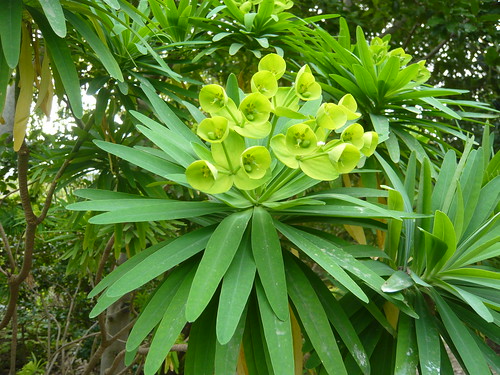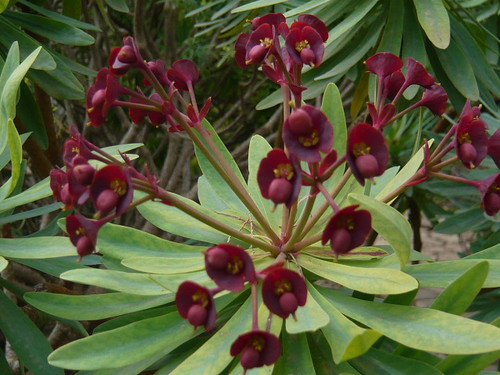Euphorbia Euphoria
Euphorbia Facts
- Euphorbia are the largest genus in the plant world with varieties on every continent except Antarctica.
- 150 species that grow well in UK gardens are listed in the RHS Plant Finder from over 2000 species worldwide.
- Euphorbia exist as tiny prostrate annuals, perennials and even Trees.
- Some spiny Euphorbia can be confused with Cacti, If you are in Africa it will be a Euphorbia in America it will be a Cactus.
- Spines of Euphorbia will be in pairs.
- Euphorbia exude a white, sticky, irritating resin when scratched.
Euphorbia Groups
- Annuals, Biennials and Short Lived perennials – grow, flower, seed and die in a season
- Annuals, Biennials and Short Lived perennials – grow, flower, seed and die in a season
- Herbaceous Perennials – die back in winter so cut down when unattractive but some varieties have good autumn colour
- Biennial-Shooted evergreen perennials – grow leafy shoots that last 2 seasons then flower to be replaced by new shoots. Cut down to ground level when they look untidy
- Evergreen or deciduous shrubs – prune only when they grow too big.
Propagation Methods
- Seed for sowing will be set by most garden Euphorbias. They do cross pollinate.
- Stem cuttings will be needed to get a true clone of a special variety. 2-3″ cuttings in spring should root well. Use a liquid hormone rooting compound if you want lots of plants.
- Herbaceous perennials can be divided by cutting the woody crown with a sharp knife. Dust with sulphur and grow the pieces on for a year before replanting. Some Euphorbias have runners that can be planted up.
See also Top Ten Euphorbias and Growing The Spurges
Euphorbia Plants Online
- Euphorbia plants at T&M
Euphorbia Seeds Online
- Euphorbia seeds at T&M


One thought on “Euphorbia Euphoria”
Comments are closed.